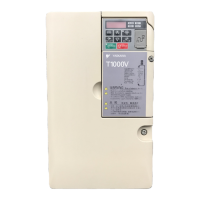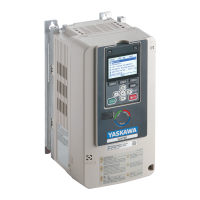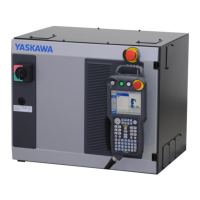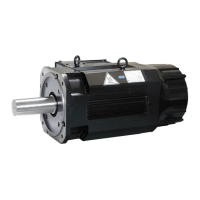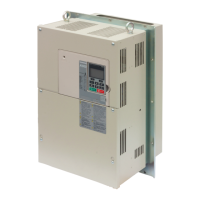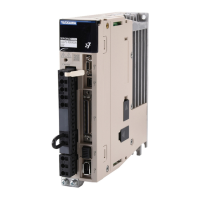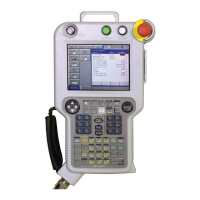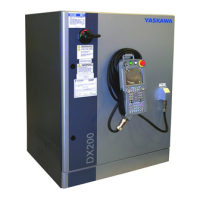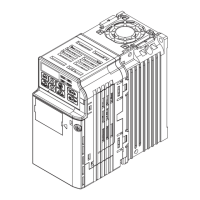5.9 n: Special Adjustments
YASKAWA ELECTRIC SIEP C710616 30B YASKAWA AC Drive T1000A Technical Manual 237
Parameter Details
5
n n3-13: Overexcitation Deceleration Gain
Multiplies a gain to the V/f pattern output value during Overexcitation Deceleration, thereby determining the level of
overexcitation. The drive returns to the normal V/f value after the motor has stopped or when it is accelerating to the
frequency reference.
The optimum setting for n3-13 depends on the motor flux saturation characteristics.
• Increase the gain gradually by 1.25 to 1.30 to improve the braking power of Overexcitation Deceleration.
• If flux saturation characteristics cause overcurrent, try lowering n3-13. A high setting sometimes causes overcurrent
(oC), motor overload (oL1), or drive overload (oL2). Lowering n3-21 can also help remedy these problems.
n
n3-14: High Frequency Injection during Overexcitation Deceleration
Enables High Frequency Injection while Overexcitation Deceleration is executed. Injecting high frequency into the
motor increases loss, which in turn shortens deceleration time. This function tends to increase audible noise from the
motor, and might not be desirable in environments where motor noise is a concern.
Setting 0: Disabled
Setting 1: Enabled
n n3-21: Overslip Suppression Current Level
If the motor current exceeds the value set to n3-21 during Overexcitation Deceleration due to flux saturation, the drive
will automatically reduce the overexcitation gain. Parameter n3-21 is set as a percentage of the drive rated current.
This parameter should be set to a relatively low value to optimize deceleration. If overcurrent, oL1, or oL2 occur during
Overexcitation Deceleration, reduce the overslip suppression current level.
n
n3-23: Overexcitation Operation Selection
Limit the Overexcitation Deceleration operation selected in parameter L3-04 to forward only or reverse only.
Setting 0: Overexcitation Operation as Selected in L3-04 in Forward and Reverse Direction
Setting 1: Overexcitation Operation as Selected in L3-04 in Forward Direction Only
Setting 2: Overexcitation Operation as Selected in L3-04 in Reverse Direction Only
u n5: Feed Forward Control
Enabling Feed Forward can improve the drives responsiveness to speed reference changes in applications where a high
speed control proportional gain setting (ASR gain, C5-01, C5-03) would lead to problems with overshoot, undershoot, or
oscillation. Figure 5.89 gives an example of overshoot reduction by Feed Forward. Parameters related to this function
and the function principle are illustrated in Figure 5.90. Feed Forward can only be used in Closed Loop Vector Control
for induction or PM motors (A1-02 = 4 or 7), or in Advanced Open Loop Vector Control for PM motors (A1-02 = 6).
No. Name Setting Range Default
n3-13 Overexcitation Deceleration Gain 1.00 to 1.40 1.10
No. Name Setting Range Default
n3-14 High Frequency Injection During Overexcitation Deceleration 0 or 1 0
No. Name Setting Range Default
n3-21 Overslip Suppression Current Level 0 to 150% 100%
No. Name Setting Range Default
n3-23 Overexcitation Operation Selection 0 to 2 0

